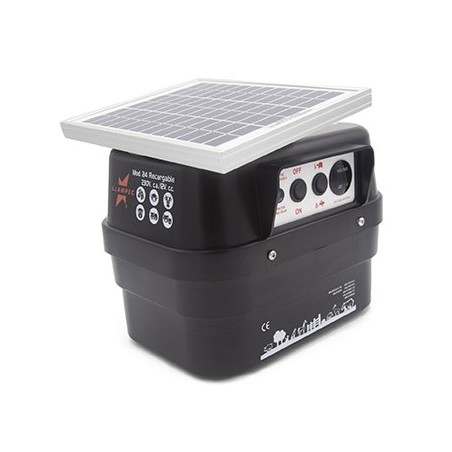African Swine Fever (ASF) in Eastern Europe
African swine fever (ASF) at present poses the biggest threat for pig production in Eastern and Central Europe. The present epidemic in this region of Europe started in 2007 in Poti, Georgian, Black Sea harbor, from where the virus spread to other territories of Georgia, and next, to Armenia, Russian Federation, Belarus, Ukraine, Lithuania, Latvia, Estonia and Poland.

ASF and its control measures in Poland
In Poland, monitoring, surveillance and diagnostic investigations of ASF cases are being conducted by the State Reference Laboratory at the National Veterinary Research Institute in Pulawy. In 2011-2013, prior to detection of the first case of ASF in Poland, there were performed tests of 2124 samples from pigs and 13063 samples of wild boar. From the middle of February 2014, when the first case of ASF in wild boar was detected, until the end of October 2014, there were performed tests of samples from 18683 pigs and 8911 wild boar. It has to be stressed that Poland is the country where, in this period, the largest number of serological and PCR tests for ASF were performed.
Tab. 1. Laboratory analysis for ASFV in Poland in January-October 2014.
| Test | Species | |||||
| Pigs | Wild boar | |||||
| No. of samples | Result | No. of samples | Result | |||
| + | - | + | - | |||
| PCR | 18722 | 6 | 18716 | 11878 | 45 | 11833 |
| ELISA | 1599 | 0 | 1599 | 4094 | 4 | 4090 |
| Total tests | 20321 | 6 | 20315 | 15972 | 49 | 15923 |
| Total animals | 18730 | 6 | 18724 | 11878 | 45 | 11833 |
At present, there are two security zones established, namely the infected zone (20 municipalities), where wild boar and domestic pigs were found infected with ASFV, and the buffer zone surrounding the infected zone (36 municipalities). Both zones are within Podlaskie voivodeship. Out of the infected zone pigs can be moved to other parts of Poland only from holdings that fulfill a number of strict health and biosecurity conditions, and officially certified by State Reference Laboratory for ASF, as free from ASF. No pigs are allowed to be moved from the infected zone to EU and third countries. Out of the buffer zone pigs can be moved to EU only from holdings that fulfill a number of strict health and biosecurity conditions.
The security measures applied in Poland involve investigation of all carcasses and sick pigs with clinical symptoms suggestive of ASF. All, found dead wild boar, in the whole area of Poland, regardless the presumed cause of death, have to be tested for ASF (ELISA and PCR). Also, all wild boar hunted within the infected zone, have to be tested for ASF. All pigs from holdings located within the radius of 10 km from every case of ASF in wild boar or domestic pigs after risk assessment (in case of any risk of spread of the disease), have to be stamped out.
| Cases of ASF in wild boar in Poland in February-October 2014 (the dates of sample collection or the laboratory diagnosis) |
|
| 1.- | 14 February 2014, 1 wild boar, near village Grzybowszczyzna, municipality Szudziałowo, about 900 m from Polish-Belarussian border. |
| 2.- | 17 February 2014, 1 wild boar, near village Kruszyniany, municipality Krynki, near Polish-Belarussian border, about 15 km for the first case. |
| 3.- | 21 May 2014, 1 wild boar, river Świsłocz, near village Rudaki, municipality Krynki, about 800 m from Belarusian border, 4.5 km from the second case. |
| 4.- | 29 May 2014, 3 wild boar (locha i dwa warchlaki), near village Łosiniany, municipality Krynki, about 3 km from the third case. |
| 5.- | 24 June 2014, 1 wild boar, near village Słoja, municipality Szudziałowo. |
| 6.- | 26 June 2014, 4 wild boar, river Świsłocz, near village Bobrowniki, municipality Gródek |
| 7.- | 4 July 2014, 6 wild boars, near village Łużany, municipality Gródek, about 4 km from Belarussian border. |
| 8.- | 8 July 2014, 1 wild boar, near village Wiejki, municipality Gródek, about 6 km from Belarussian border. |
| 9.- | 15 July 2014, 5 wild boar, near village Skroblaki, municipality Gródek, about 7.5 km from Belarusian border. |
| 10.- | 29 July 2014, 1 wild boar, near village Wiejki, municipality Gródek, about 10 km from Belarusian border. |
| 11.- | 29 July 2014, 1 wild boar, near village Jałówka, municipality Michałowo, about 3 km from Belarusian border. |
| 12.- | 30 July 2014, 3 wild boar, near village Wiejki, municipality Gródek, 7 km from Belarusian border. |
| 13.- | 9 August 2014, 3 wild boar, near village Horczaki Górne, municipality Szudziałowo, about 5 km from Belarusian border. |
| 14.- | 26 August 2014, 1 wild boar, near village Kolonia Mostowlany, municipality Michałowo, about 3.5 km from Belarusian border. |
| 15.- | 12 September 2014, 1 wild boar, near village Kolonia Zaleszany, municipality Michałowo. |
| 16.- | 6 October 2014, shot wild boar, near village Straszewo, municipality Gródek, 11 km from Belarusian border. |
| 17.- | 8 October 2014, 1 wild boar, near village Nowosady-Kolonia, municipality Michałowo, 1.2 km from Belarusian border. |
| 18.- | 10 October 2014, 16 wild boar, near village Piłatowszczyzna, municipality Gródek, 15 km from Belarusian border. |
| 19.- | 19 October 2014, 2 wild boar, near village Wyżary, municipality Gródek, about 17 km from Belarusian border. |
In summary, all 19 ASF wild boar outbreaks involved 53 animals that were found in municipalities of Podlaskie voivodeship, up to 17 km from the border with Belarus.
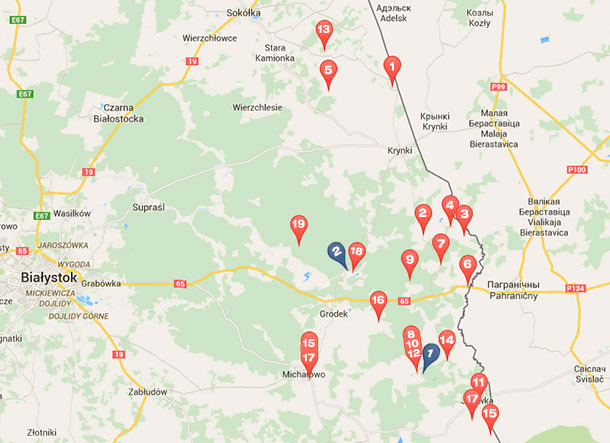
Fig. 1. ASF cases in wild boars and pigs from February to October 2014 occurred in the municipalities adjacent to the Polish-Belarusian border.

Two outbreaks of ASF in domestic pigs in Poland
The first outbreak of ASF in domestic pigs in Poland was diagnosed on 22 July 2014, in a pig holding having 8 pigs only. The pig holding was located in Zielona, municipality Gródek, about 2.5 km from the border with Belarus. The anamnesis indicated that the clinical symptoms characteristic for ASF were observed in this farm yet before 17 July 2014. On that day, three pigs were found dead, and they were buried by the farmer. After observing of more sick pigs on 19 July, the farmer reported the fact to the veterinarian, who further informed the veterinary administration. The analysis of the samples from the previously buried and newly found diseased pigs confirmed the presence of ASF virus. All the remaining pigs were killed and destroyed. The farm area was cleaned and disinfected. The procedures were performed according to the law on control of notifiable diseases of animals.
The second ASF outbreak was recognized on 6 August 2014 in Józefowo, municipality Gródek, in the only pig that was held by the farmer. This farm was located 13 km north of the pig holding where the first ASF outbreak was diagnosed. Both farms were located near the forest and no biosecurity measures were applied.
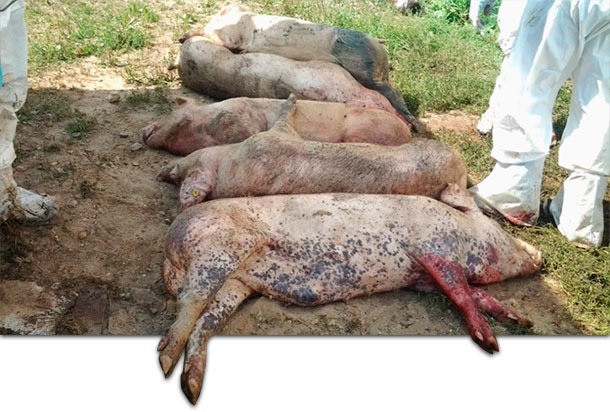
Fig. 2. Carcasses of pigs infected with ASFV.
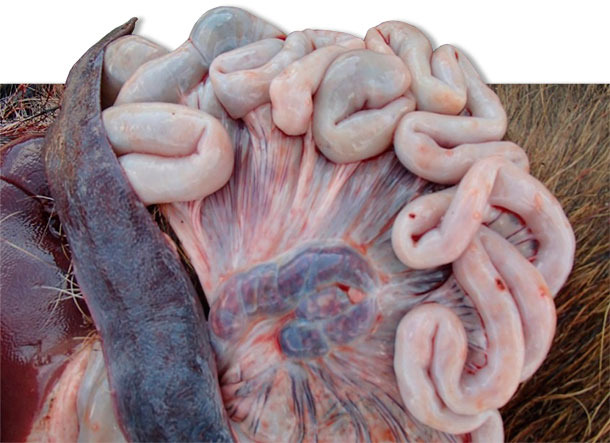
Fig. 3. Enlarged spleen and mesenterical lymph nodes of wild boar infected with ASFV.
The origin of Polish strains of ASFV
The ASFV strains identified in Poland were subjected to DNA sequencing and analysis, what showed their close relationship to the strains previously found in Belarus and Lithuania. Those strains have characteristic 10 nucleotide insertion (genetic marker), which is not present in Russian strains (Gallardo et al. 2014). The genetic characteristics of Polish strains of ASFV, as well as geographic distribution of ASF cases, suggests the origin of Polish strains of ASFV in Belarus.
At present, the most important risk factor for ASF spread is the growing population of wild boar in eastern Poland. Similar situation exists in the EU countries east of Poland, where numerous cases of ASF in wild boar were diagnosed. In some areas the density of population exceeds 2 wild boar/ km2, what certainly helps maintaining the ASF circulation. One of the reasons of growing population of wild boar in the restricted areas is low hunting activity. It is forbidden to transport killed wild boar out of the infected zone.
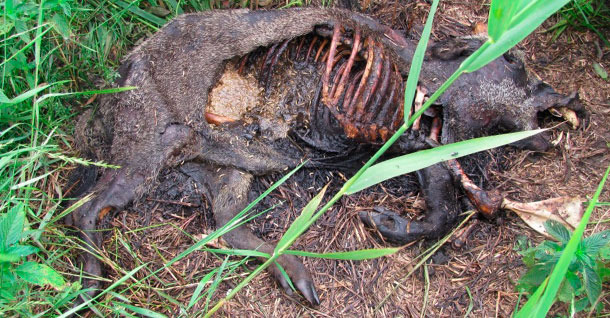
Fig. 4. A carcass of a wild boar that was confirmed to die due to ASF.
ASF situation in Poland in comparison to other countries
The comparison of the ASF situation in Poland to the ASF situation in Latvia, Lithuania, Belarus and Russia shows that the epidemiology of ASF can be very different. For example in Latvia, the very first case of ASF was diagnosed on 25 June 2014, and during the two following months, 61 ASF cases in wild boar and 39 outbreaks in domestic pigs were identified. Those outbreaks and cases occurred in the whole territory of Latvia. The number of cases and outbreaks in Lithuania is much smaller than in Latvia but the economic losses are severe, also due to the fact that one of the outbreak occurred in a large farm (Ignalin) with about 20 000 pigs.
The information about ASF in Russian Federation and Belarus is limited and objective data is missing. Unofficial evidence indicates that in those countries ASF may be endemic, which is the important factor making the disease control very difficult. In those countries the spread of the disease is mainly caused by man, and occurs due to transportation of infected meat and meat products over long distances. Moreover, the spatio-temporal analysis indicated the spread of the disease along the main transport routes.
In summary, the ASF situation in Poland seems to be very different from the countries east from Poland. ASFV in Poland was detected in very small and restricted area of 4 municipalities of 2 counties in Podlaskie voivodeship which indicates that the control measures applied against ASF are effective.
Analyzing the spread of ASF in Poland (19 cases and 2 outbreaks in 4 municipalities) it can be concluded that among wild boar in 4 municipalities the course of the disease is endemic rather than epidemic.
The risk of transmission of ASFV in other parts of Poland exists and, as in the other countries, it is most likely to occur due to transportation of infectious pork or wild boar meat, or their products.




